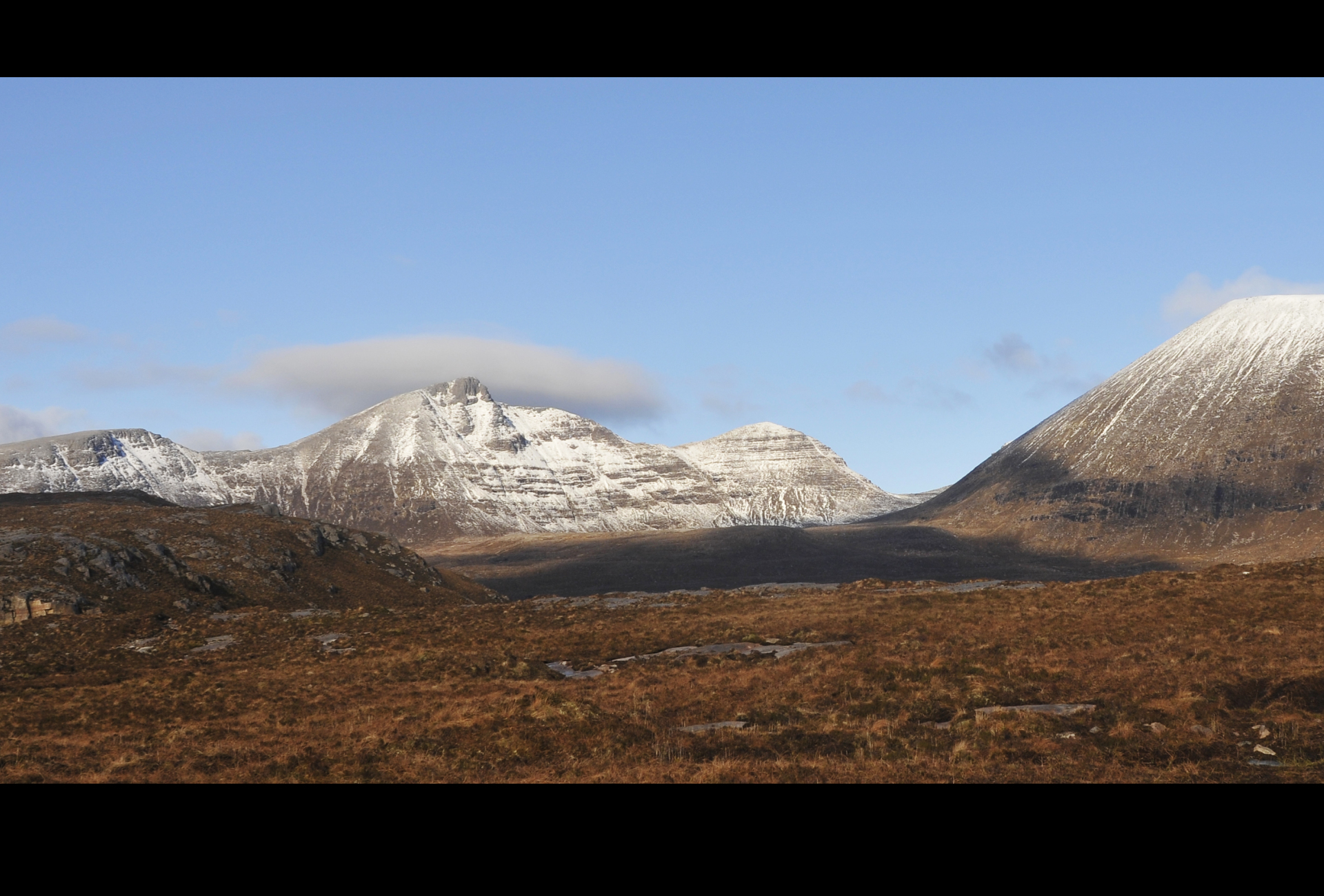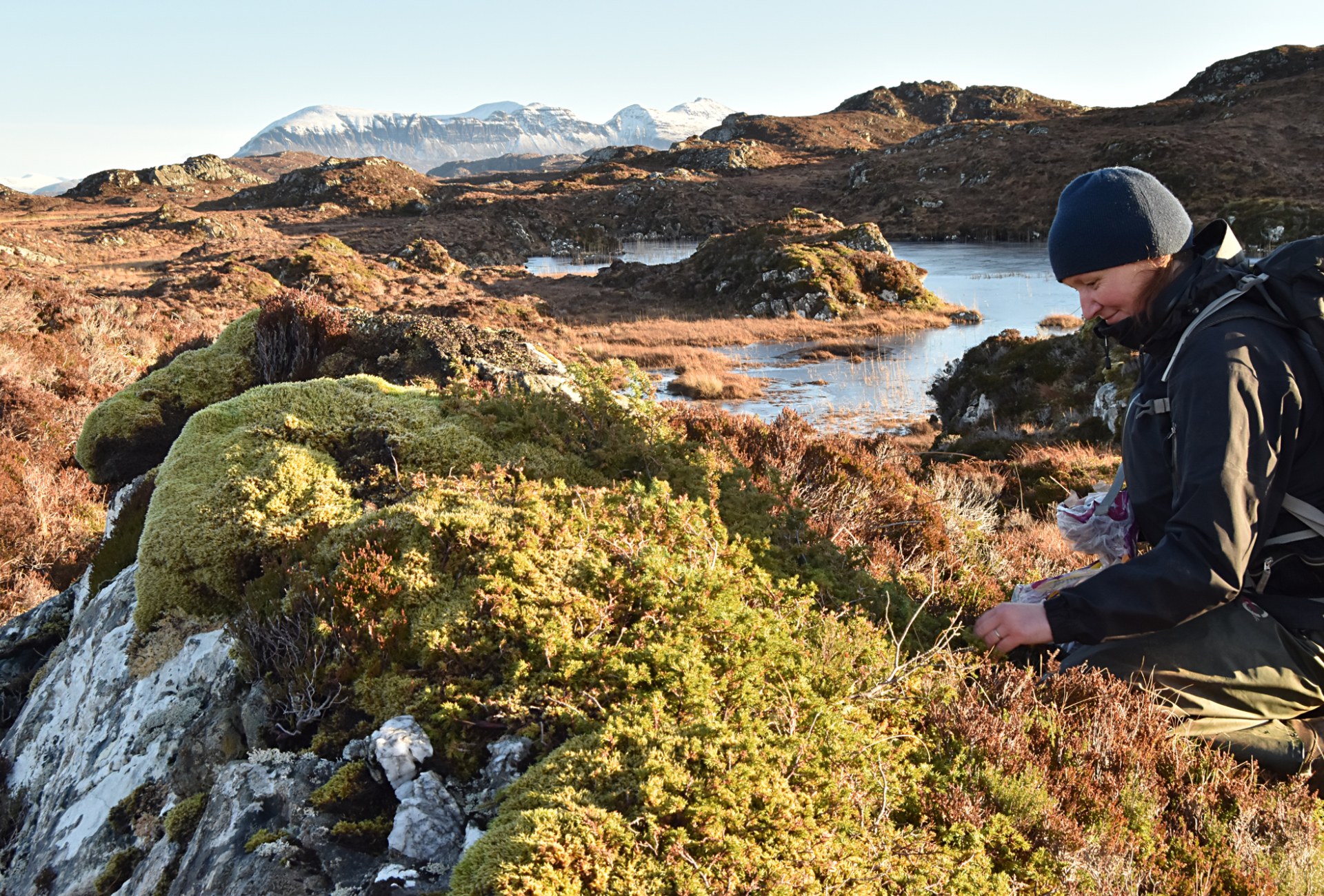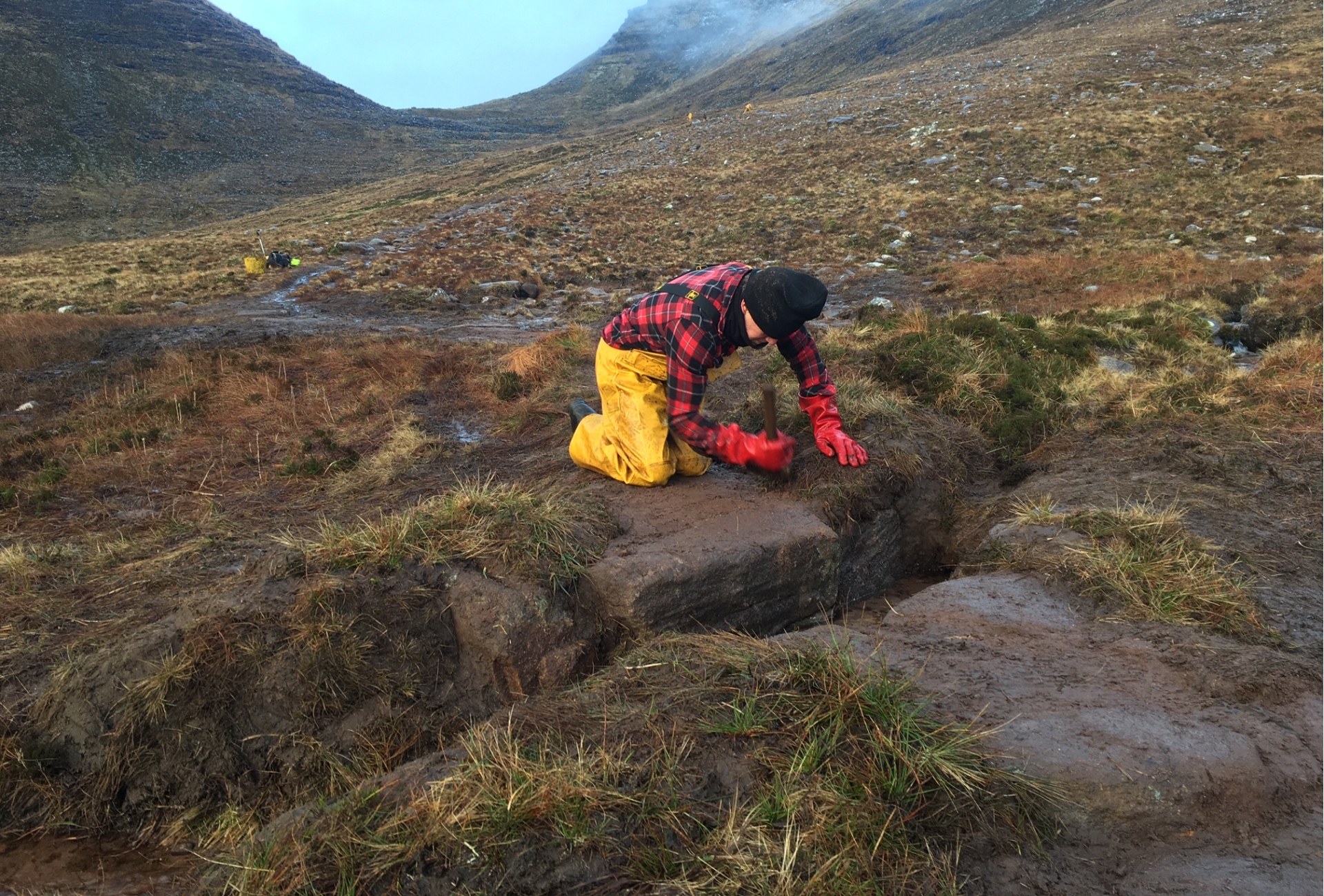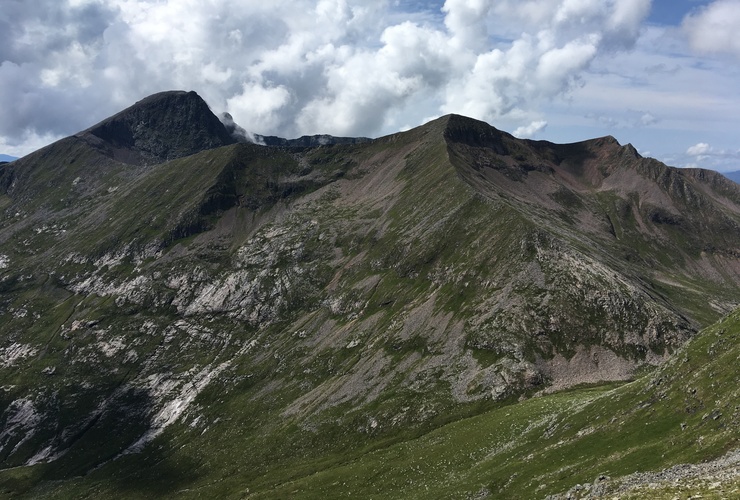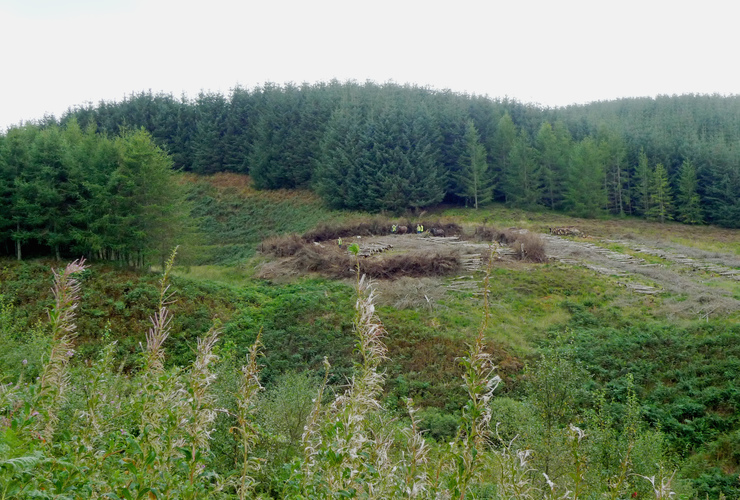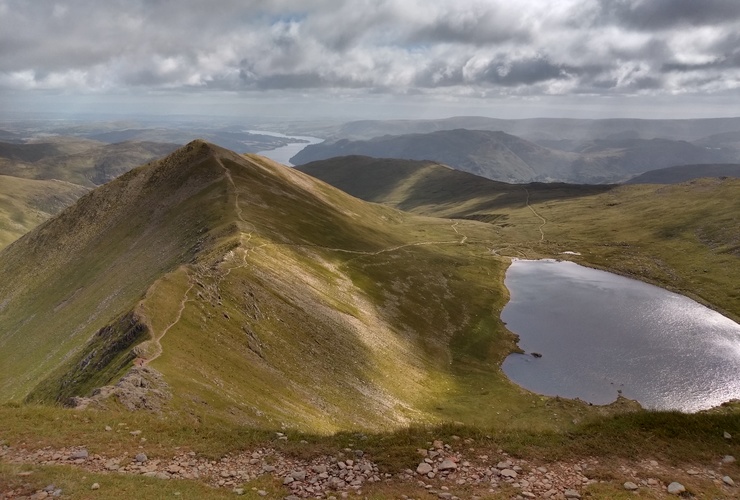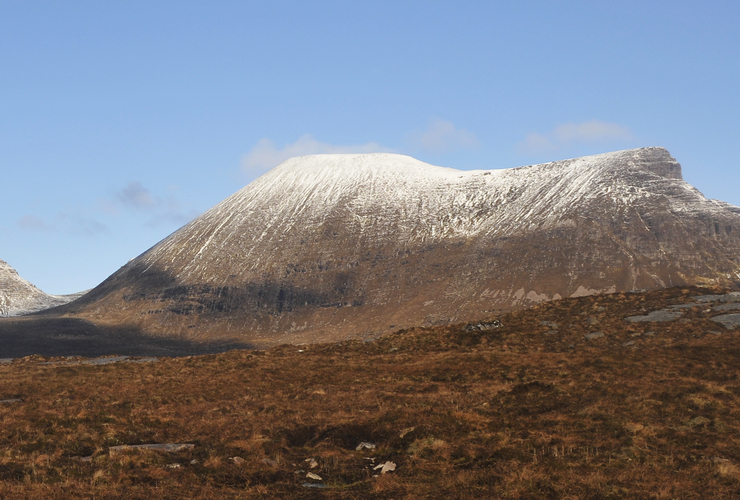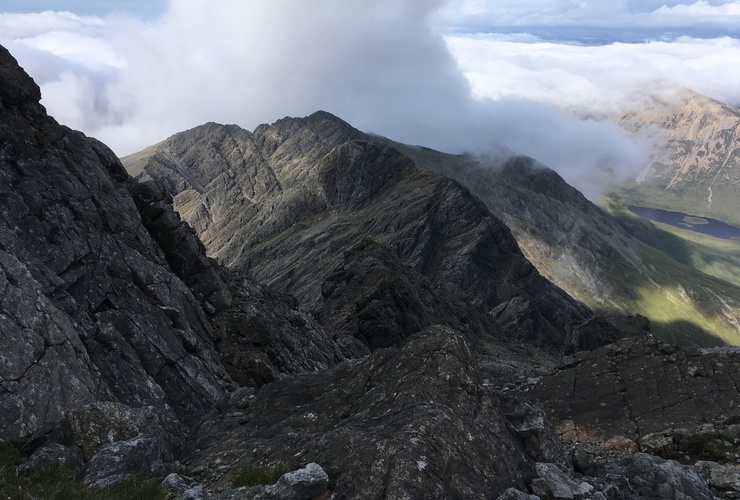Restoring habitats
- 155 tagged seedling trees were measured on Quinag and Kylesku and compared to the previous years height:
- Results showed that there was a decrease of 1cm in the average height compared to 2020.
- The likely reason for this lack of growth is browsing by deer.
- This data is helping inform our increased deer management efforts going forward, in line with many other estates across the wider area. A tender for this work was published in September, and a contract stalker will now carry this forward, with an Out of Season license to protect designated woodlands. - MSP Maree Todd is championing the lesser butterfly orchid. With the Trust's support she is advocating for a delay of verge cutting by the Highland Council. This will protect an area near Loch Assynt where these nationally rare orchids are threatened.
Working with communities
- 16 volunteer days helped with bracken clearing, survey work, footpath maintenance, clearing litter and painting the footbridge at Quinag in 2021. Increased interest in volunteering from the Trust website led to a higher than usual number of volunteers, who also helped out at the CALL Little Assynt Tree Nursery.
- We co-funded a new Assynt Community Deer Larder to replace the old one at Glencanisp. This was also supported by the CALL (Coigach and Assynt Living Landscape) Partnership and the National Lottery Fund:
- The new deer larder includes a small processing facility to allow some ‘home butchering’ by suitably accredited members of the local community.
- The adjacent old deer larder has been repurposed as an interpretation and educational centre, focusing on local deer and land management.
- It will also provide a base for delivering Trust projects such as Hill to Grill and the Women's Stalking in 2022. - Five guided walks took place, led by Trust staff, and included activities such as collecting hazel nuts and learning about navigation.
- A butterfly count in July recorded 20 scotch argus butterflies on Quinag.
- Young people from Ullapool High School are taking part in the Junior Rangers Programme on Quinag. This year-long programme aims to give young people experience in working outdoors, and covers wildlife and habitat monitoring, land management, visitor engagement and even carbon capture.
- S2 pupils from Ullapool High School spent two days with local staff on Quinag in June to learn about land management and to plant trees.
Collaborating with partners
- The Coigach and Assynt Living Landscape Partnership, of which the Trust is a part, has come to a close, having achieved significant impact over the last 5 years. It was one of the largest landscape-scale restoration projects in Europe, and supported over 30 individual projects for culture, heritage, nature and people.
- The Trust has partnered with the University of the Highlands and Islands (UHI) to support a PhD research project entitled “Of Trees, Deer, Humans and the Spaces Between: Orientating towards the future by giving voice to the disparate groups and individuals involved in Scotland’s ‘deer question’ through creative practice research.”
- The Quinag Wildlife Project – a collaboration between the Trust and the Assynt Field Club - continues to collect valuable wildlife data on Quinag. A data collector has been employed and funded through the CALLP community grants scheme, and is gathering information about key species of plants and animals, as well as the impact of human activities on the landscape.
Wild places for all
- Essential path work on the Sail Gharbh summit route was completed in January 2021. 30 tonnes of stone was flown in by helicopter for a 70-metre section of path that was badly eroded. In September further work began on the lower section, and 600 metres of path were restored and upgraded.
2022 focus
- A women’s stalking project will be launched next year. In what is a very male dominated field, this project aims to provide a supportive environment for women to learn the skills required to stalk and process venison for their own consumption.
- The Hill to Grill project will relaunch, led by Trust staff. Offered to young people who live locally, this project aims to raise awareness about deer stalking, and discuss the science and processes behind it.
- Participation in the North West 2045 (NW2045), which aims to give local organisations and communities a collective voice for the region. Focus areas include jobs, housing, land use, public services, sustainable economic opportunities and climate change targets. A project manager is being employed through Assynt Development Trust to develop the first phase of the regional land-use partnership.
- Participation in the Endangered Landscapes Programme - a landscape scale project that aims to strengthen the link between thriving communities and ecological restoration. Covering a similar geographical area to NW2045, this project is being led by the Scottish Wildlife Trust.
